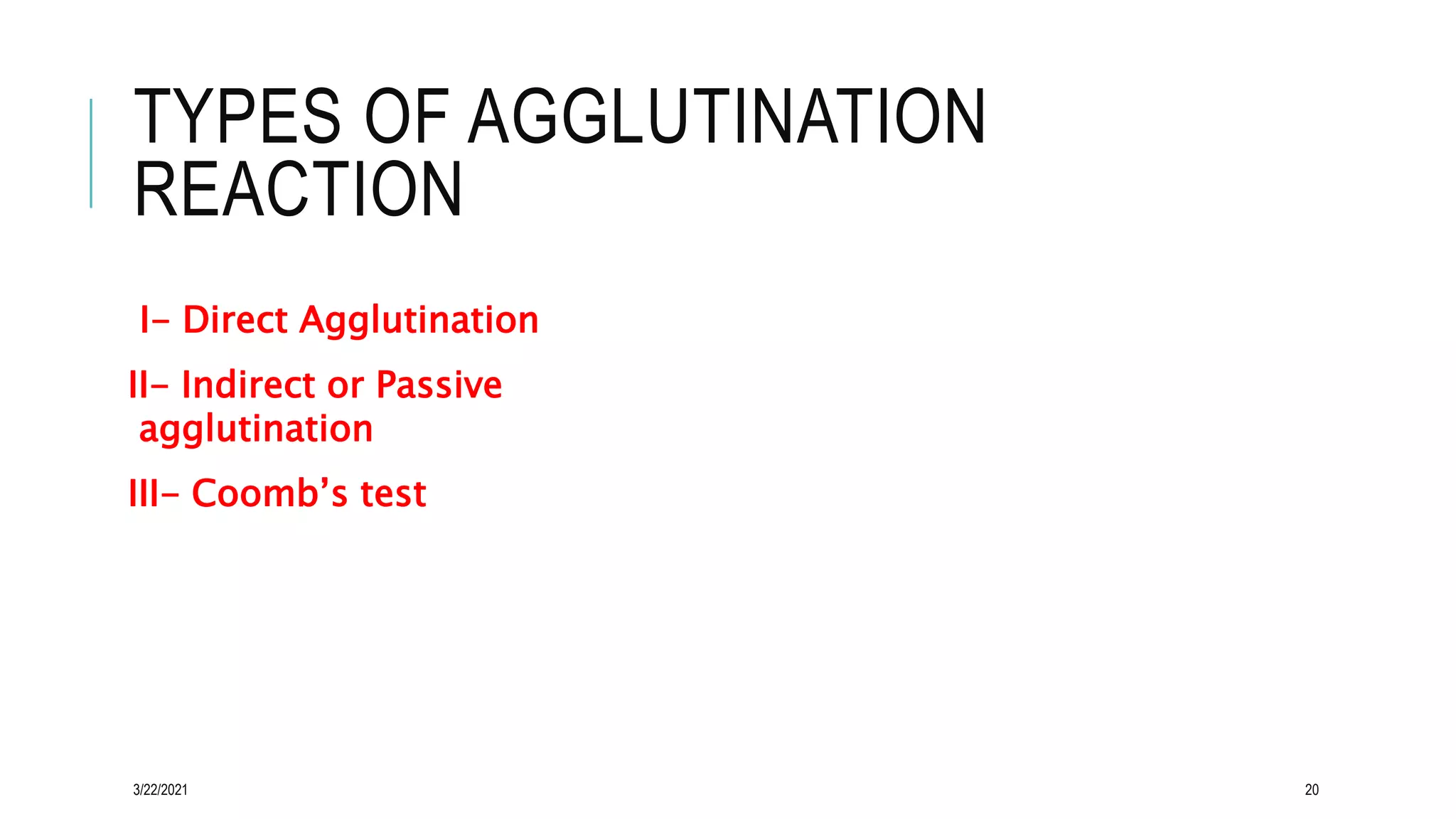The document discusses antigen-antibody interactions and various serological techniques used to detect them, including precipitation reactions and agglutination reactions. It describes how antigen and antibody bind through non-covalent interactions, and factors that affect the antigen-antibody reaction like concentration, temperature, and pH. It also summarizes different techniques used to detect antigen-antibody interactions like precipitation, agglutination, Coombs test, and flocculation and the principles behind each method.






























